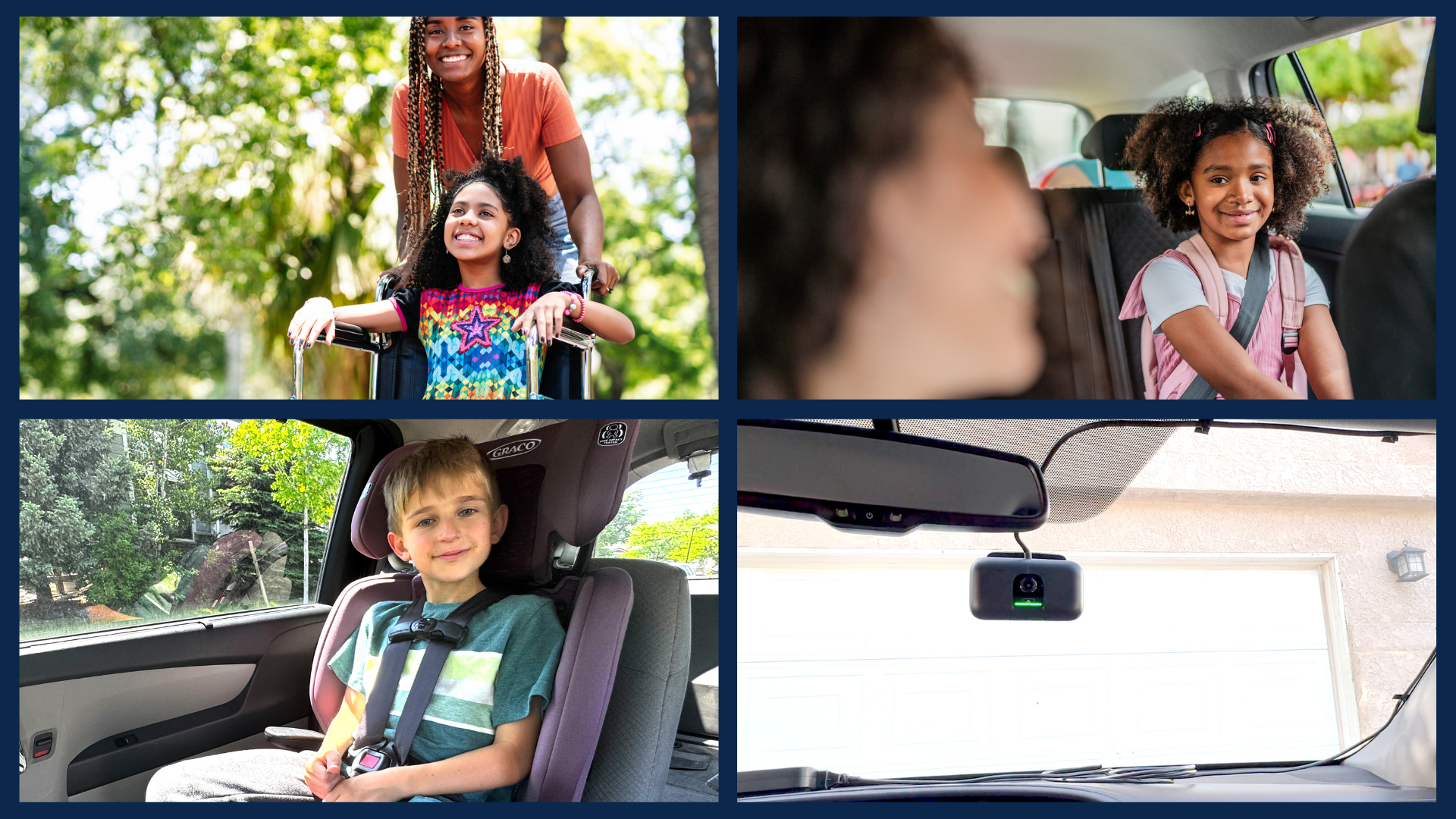Key Findings from the 2024 State of School Transportation Report
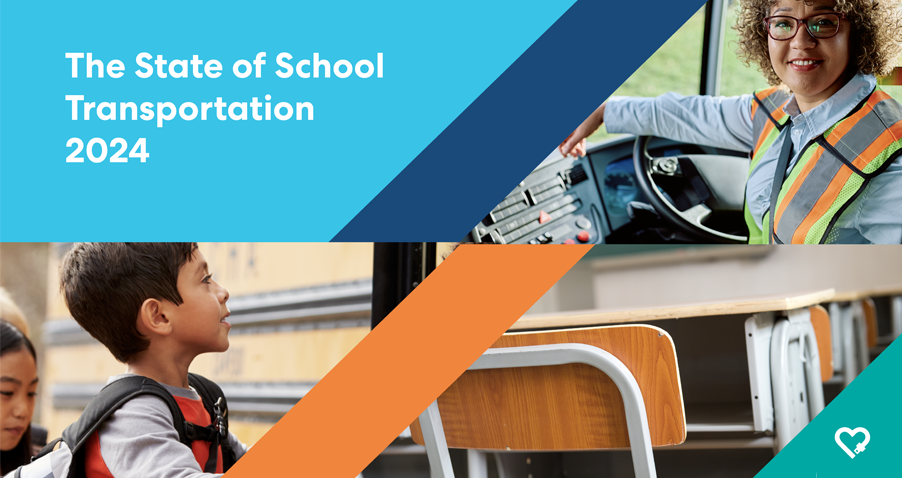
HopSkipDrive recently published the 2024 State of School Transportation Report, offering a comprehensive look at the current climate of student transportation in the United States. From bus driver shortages to chronic absenteeism, the report delves into the challenges facing schools, districts, and parents as they strive to get students safely and reliably to and from school.
This article highlights the main takeaways, focusing on the impact on schools, districts, and families.
The bus driver shortage persists
The school bus, once a reliable symbol of childhood, continues to face a crisis. Again this year, one of the most pressing issues is the nationwide shortage of qualified school bus drivers. As highlighted in this year’s report, 91% of respondents report experiencing a driver shortage in their district.
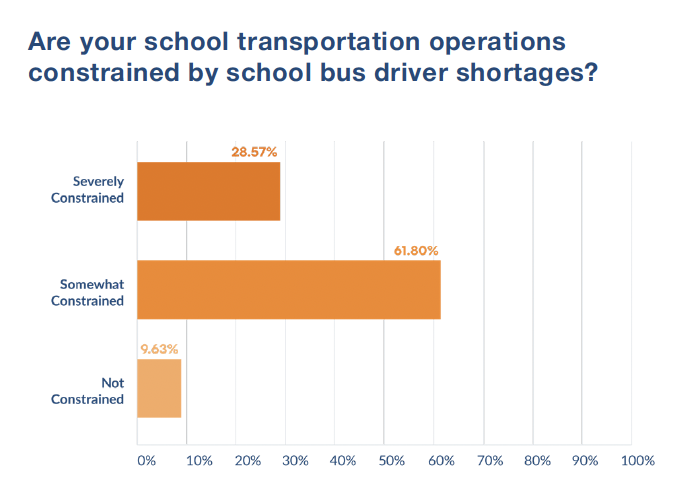
This translates to disruptions in routes, delays, and in some cases complete cancellations. In fact, 60% of school leaders say the driver shortage has been severe enough to require shortened or reduced routes.
“We are short sub-drivers that can take over when a driver takes an activity. We now just combine routes or run one late.”
—2024 State of School Transportation survey respondent
Districts and schools not having enough qualified school bus drivers is not a new problem, but it is one that has soared to new heights in recent years. In 2021, 78% of respondents to our State of School Transportation survey reported their transportation operations were constrained by bus driver shortages, and that number has continued to climb.

Lack of transportation leads to absenteeism
Schools continue to struggle with high rates of chronic absenteeism, and district and school leaders recognize that many factors contribute to this problem. Over 44% of school leaders identify transportation challenges as a factor that contributes to chronic absenteeism — and more than 21% report transportation challenges are the biggest contributor to chronic absenteeism in their schools, even more than student health issues.
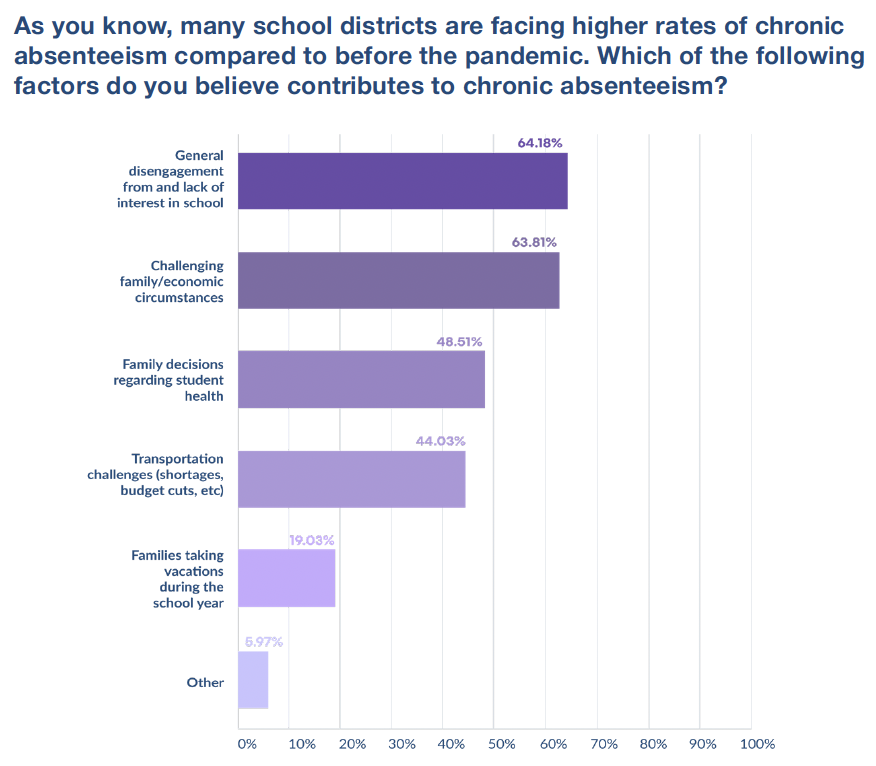

Sustainability and climate goals are distant concerns
Despite growing environmental concerns and significant federal investments, electrifying school bus fleets remains a low priority for most school districts. While industry leaders are actively discussing the transition to electric vehicles, school leaders are largely focused on other issues. Nearly three-quarters (73%) of school leaders say that electrifying their bus fleet is not very, or not at all, important, and only 33% are aware of specific sustainability mandates. This suggests a significant gap between environmental ambitions and on-the-ground realities in school transportation.


The unfortunate reality is that electrifying school buses is a high-cost and resource-intensive endeavor, and it will therefore take years to fully transition an entire bus fleet to electric vehicles. Instead, many districts have been able to meet climate goals by optimizing their routes and supplementing with sedan-based transportation, which is easier to electrify. In fact, based on HopSkipDrive’s work with one district, partnering with HopSkipDrive can be equivalent to electrifying 40% of a district’s fleet.
Transportation has a ripple effect on families
While school districts grapple with the ongoing bus driver shortage, the repercussions of school transportation challenges are profound within families. As school bus services dwindle or disappear altogether, a heavier burden falls on parents and caregivers. A staggering 41% of parents reported that their children’s school district had reduced or eliminated bus services, forcing them to become de facto chauffeurs.
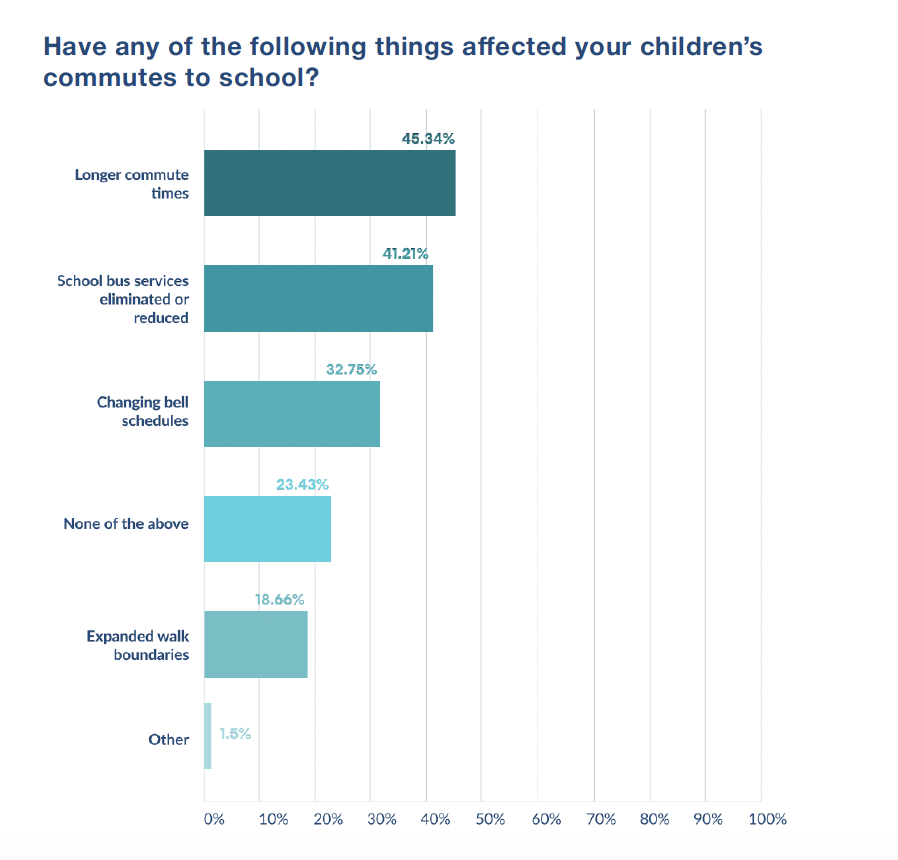
This shift has dramatically altered family dynamics. Nearly 8 in 10 parents (79%*) report they drive their children to and from school or rely on a family member to do so. More than half of parents (64%) say they stress about their child’s transportation needs at least once a week, with 29% reporting they worry about it daily.
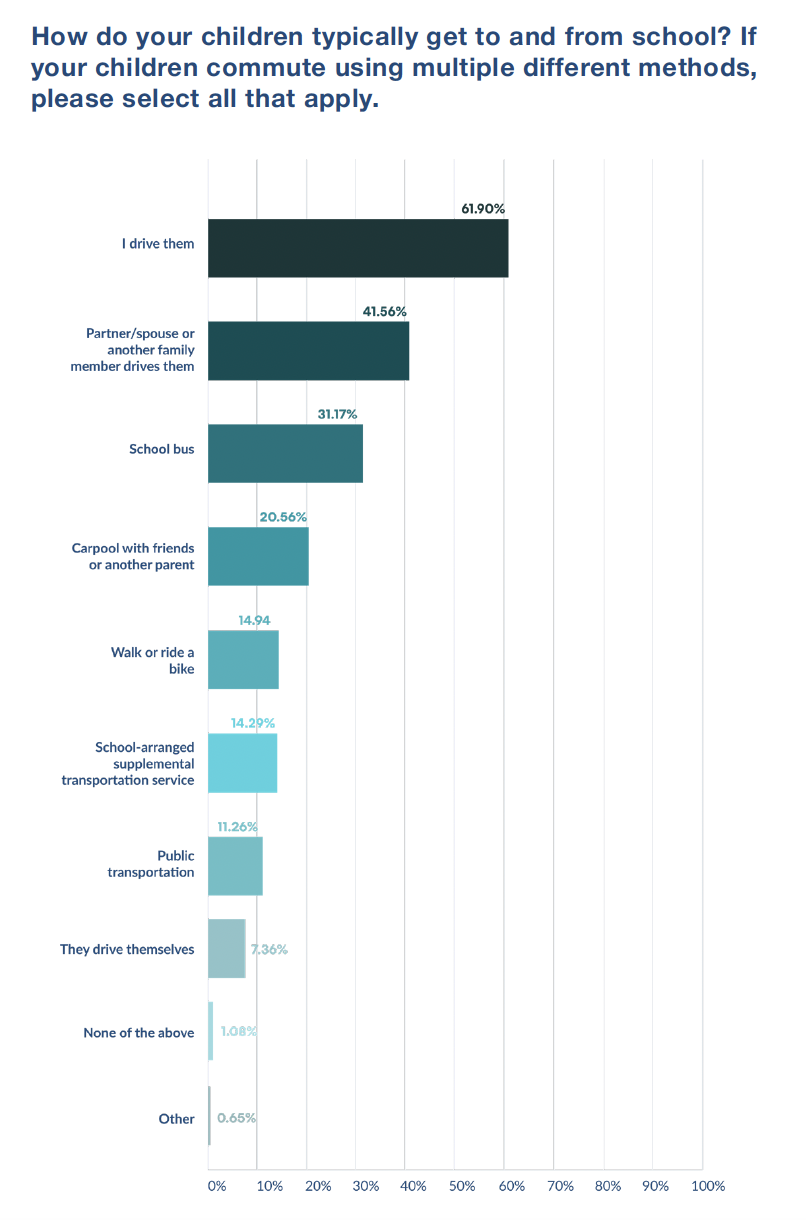
*The 79% figure was calculated by adding the number of respondents who selected “parent/spouse or another family member drives them” with the number of respondents who selected “I drive them.” That total was divided by the total number of respondents to this question.
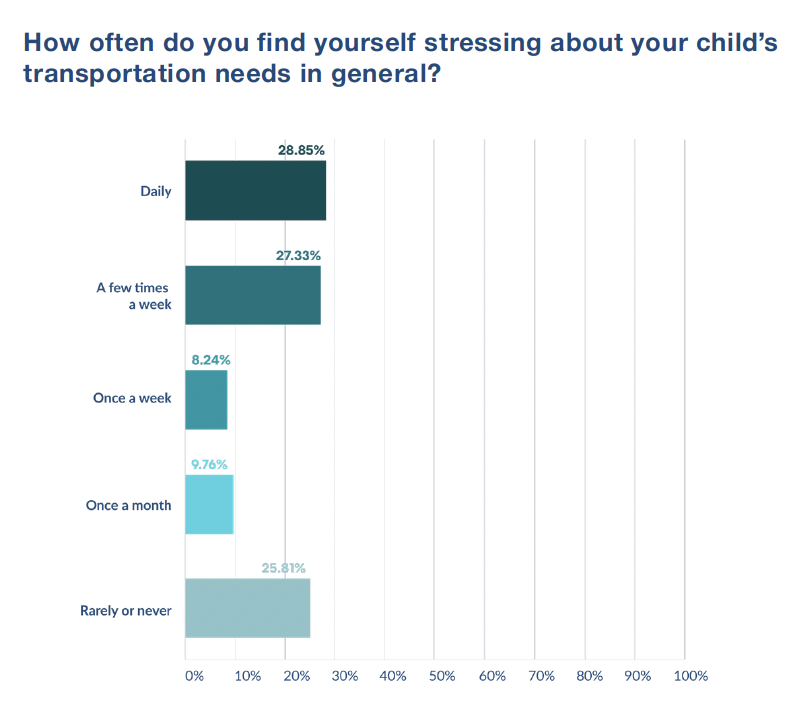
The impact extends beyond the daily commute. The added responsibility of school transportation is creating significant strain on parents’ professional lives. Over half (56%) of parents surveyed admitted that driving their children to and from school has negatively affected their careers, forcing them to adjust work schedules, decline promotions, or even forgo job opportunities altogether.
“In my new district, there are no buses, so every parent must drop off and pick up, and my sons are in two different schools on the same street. It’s a mess, and I can’t work because of it.”
—2024 State of School Transportation survey respondent
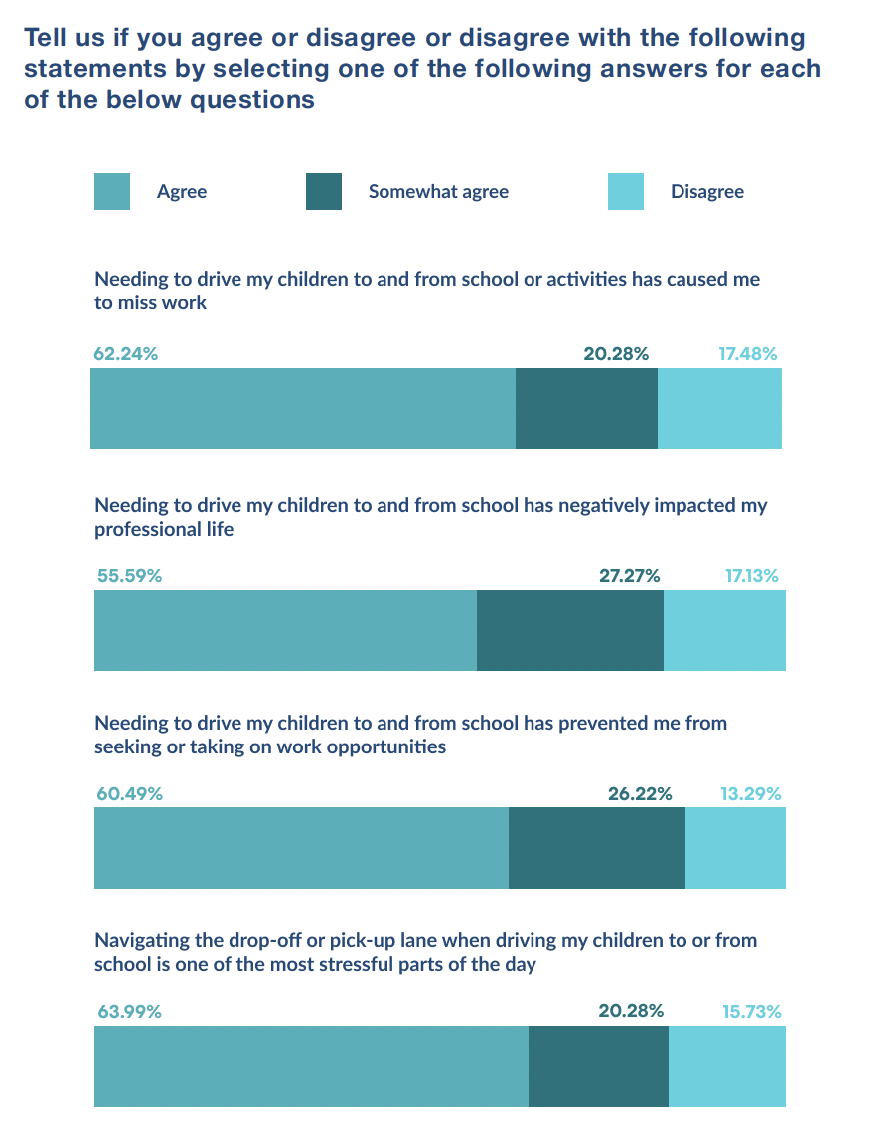
Challenges and opportunities for school transportation
The state of school transportation in 2024 presents significant challenges. However, it also offers opportunities for collaboration and innovation. By working together, schools, districts, policymakers, and transportation providers can create a more stable and efficient system that gets students to school safely and allows families to thrive.
We encourage you to download the full 2024 State of School Transportation Report for a deeper dive into the data and insights. Additionally, stay tuned for a follow-up blog post focused on the report’s findings for parents.


